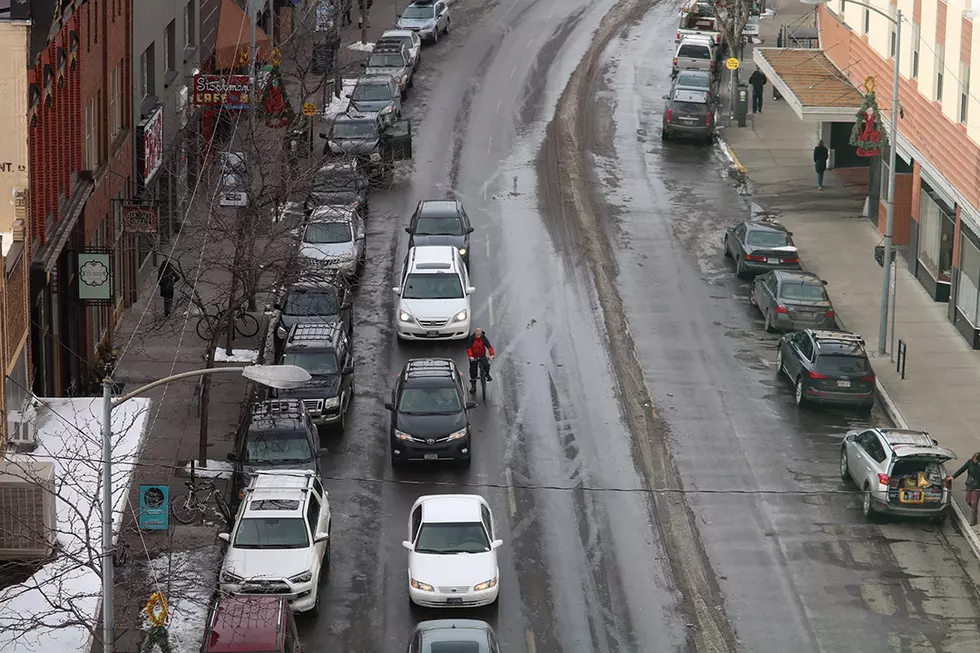
Missoula Parking Commission to explore citywide expansion, new parking garage
This is the first in a three-part series on the Missoula Parking Commission and its recommendations to the city for a new garage and an expanded parking district.
Part 2: The logic behind a citywide parking district
Part 3: Where to build a new parking garage?
Expanding its jurisdiction beyond the downtown district and funding a new parking structure are among the goals the Missoula Parking Commission is exploring as it looks to manage parking into the future.
The parking commission hasn't expanded in 30 years, and members likened its current approach to parking as the tail that wags the dog. The commission is now looking to take a more proactive approach to address growth and housing costs, and locate the funding needed to align its goals to match those of the city.
On Tuesday, the commission directed staff to take the initial steps in hiring a consultant to review parking management, strategy and the implementation of a citywide parking district, which could initially include the Hip Strip and the Riverfront Triangle, along with some surrounding neighborhoods.
Wherever expansion occurs, city officials challenged the commission to think outside the box and prepare for the challenges that come with a growing city and its need for more housing.
“Management is going to mean a lot of different things in a lot of different areas,” said Dale Bickell, the city's CAO. “As we grow and grow more densely, parking is going to be an interesting issue, and how we deal with that.”
Bickell asked the commission to consider an operation that's not entirely funded on parking revenues and enforcement fees. Nor does expansion of the parking district mean a parking meter will appear in every neighborhood.
Still, Bickell said, expanding the parking district is something the city would like to see happen sooner rather than later.
“There's new interest through code reform for the parking commission to expand the entire city limits,” he said. “As our growth policy forces us to look inward for housing – and as our code reform project looks at parking as a tool to increase housing – we'll need better tools to enforce parking in neighborhoods.”
The city this year is set to begin reforming its building and zoning codes to streamline a number of goals and create a more fluid and simpler building process. That's expected to include changes to city codes around parking and how much is required for certain projects.
Last week, the City Council got its first look at potential incentives intended to prompt developers to include more affordable housing in their projects. The incentives could include a 50% reduction in parking in exchange for a set number of units held affordable for a set number of years.
“The city already has a fairly progressive parking standard related to residential development. But we talk about parking more than we talk about housing,” Bickell said. “It would be nice to have that conversation more about housing. Having a good, efficient system to manage that (parking) would help achieve our housing goals.”
Based on the findings of the consultant's study, the commission would be the first to recommend expanding the parking district. That would be considered alongside other transportation planning. The final decision would go before the City Council.
While the entire city is in play, members of the commission said the Riverfront Triangle, the Hip Strip and the Old Sawmill District would likely be considered first.
Parking garages have also been suggested for the Riverfront Triangle, the Hip Strip, the Old Sawmill District and even Caras Park and City Hall. Funding for any one of them hasn't been identified.
“The commission should take a holistic approach at looking at all those things,” Bickell said. “If managed parking happens on the Hip Strip, it might push parking into neighborhoods. Being able to take a holistic approach to that would be smart.”
The current parking district is relatively isolated to downtown Missoula, and while an expanded district has been mentioned in the past, only now has it been set in motion. In a Tuesday vote, the commission agreed that its goal is “to prepare for future opportunities that mirror and match the city's mission and goals,” including housing, climate, equity and other issues.
While on-street public parking will be in play if the district is expanded, exploring partnerships with private parking could also be part of the equation.
“Taking a look at our mission, it has a very reactionary tone to it. I'd like it to be more proactive and be more interconnected with the city and what's going on,” said Ian Ortlieb, director of the Missoula Parking Commission. “It's being able to spot things that are happening and being more active, or proactive, in addressing the things that may come up.”
In 2021, Ortlieb said the Missoula Parking Commission brought in $2.4 million in overall revenue. In the first three quarters of this fiscal year, it already has brought in more than $2.1 million.
Expanding the district could bring in more revenue and relieve some of the challenges that will come with increased density and congestion. Members of the commission said they're up for the challenge.
“I'm glad the mayor's office is open to direction. It sounds like their priorities overlap with ours,” said commission chairman Joe Easton. “There's an opportunity for us to advance some calculated risks – advancing on the initiatives of the mayor's office and City Council.”
